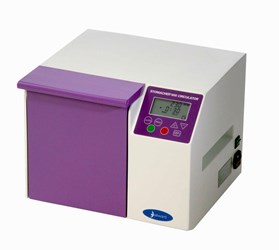Seward Stomacher Used For Hygiene Monitoring And Biosecurity

Sponge swab and Stomacher technique proved to be highly effective sampling combination for assessing large surface areas
Seward Ltd., manufacturers of the world leading range of Stomacher paddle blenders and Stomacher accessories used in sample preparation for microbiological analyses, have highlighted the highly effective use of its Stomacher technology in combination with sponge swabs for hygiene monitoring and biosecurity applications.
Hygiene monitoring in food and pharmaceutical production facilities and clinical environments requires simple sampling techniques with excellent microbial recovery rates across a spectrum of different species. A recent study [1] has confirmed the effectiveness of the combined sponge swab and Stomacher sampling methodology for sampling a large surface area.
This popular sampling method utilises sponge swabs pre-dosed with buffer to swab a surface and then, to recover the micro flora, the sponge swabs are processed in the Stomacher 400 Circulator. A number of suppliers offer pre-manufactured devices such as 3M and Technical Services Consultants Ltd, which work very effectively in Stomacher products. Various different approaches can be applied, processing either pooled samples in the Stomacher 400 or individual swabs in the Stomacher 80 Biomaster.
Due to the efficacy of the Stomacher and sponge swab combination, it has also been adopted in more critical fields such as biosecurity. Security services on both sides of the Atlantic have recently adopted the technique to detect and monitor the potential spread of weaponised bacterial contaminates such as Bacillus anthracis.
The effectiveness of the sponge and Stomacher technique over the swab technique for sample collection is demonstrated in a recent paper [1] concerning the clinical environment and the monitoring of Acinetobacter baumannii. The sponge and Stomacher technique allows for a greater surface area to be tested than achievable with a swab head. This also means that the sponge method delivers greater sensitivity.
For more information, visit www.seward.co.uk.
Reference 1: Thom K.A. et al.. Comparison of swab and sponge methodologies for identification of Acinetobacter baumannii from the hospital environment. Journal of Clinical Microbiology 2012, 50(6):2140.
Source: Seward Limited
